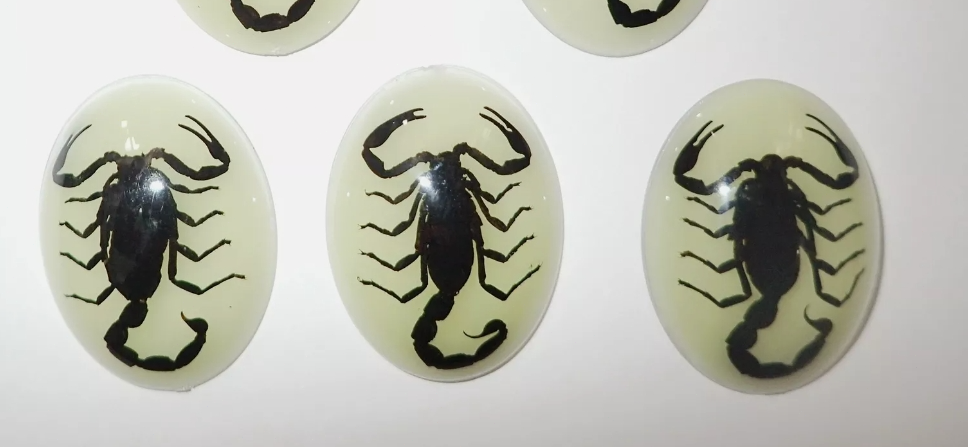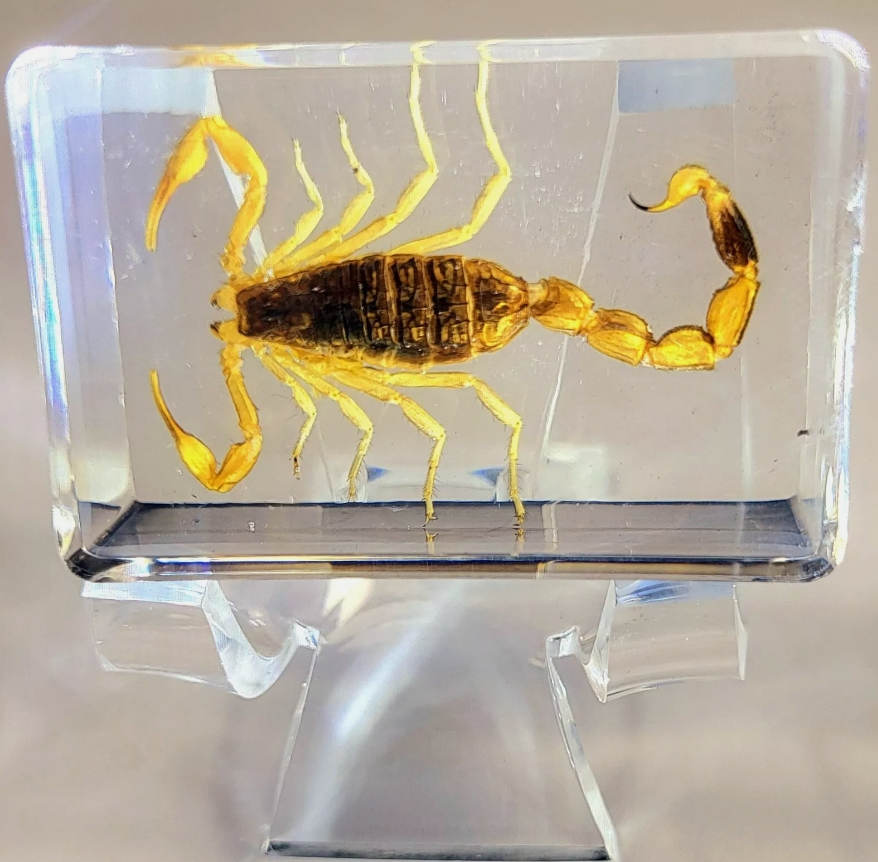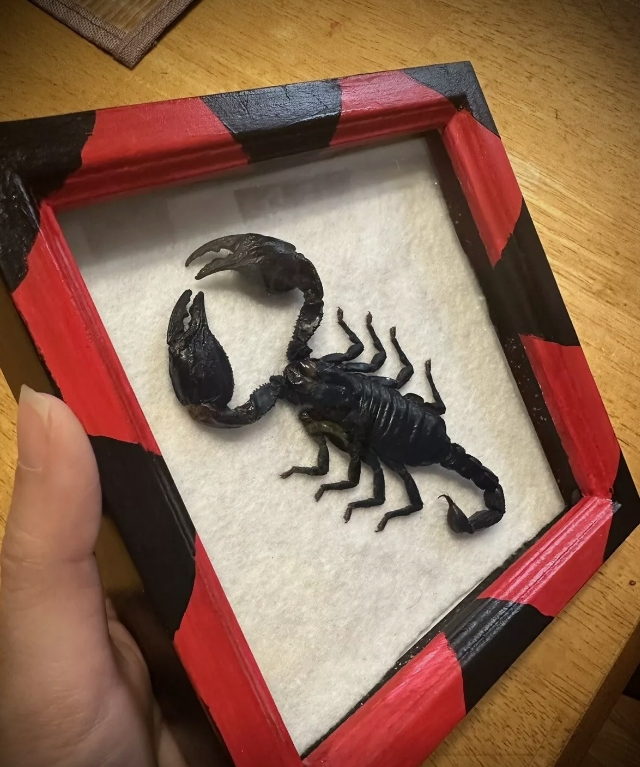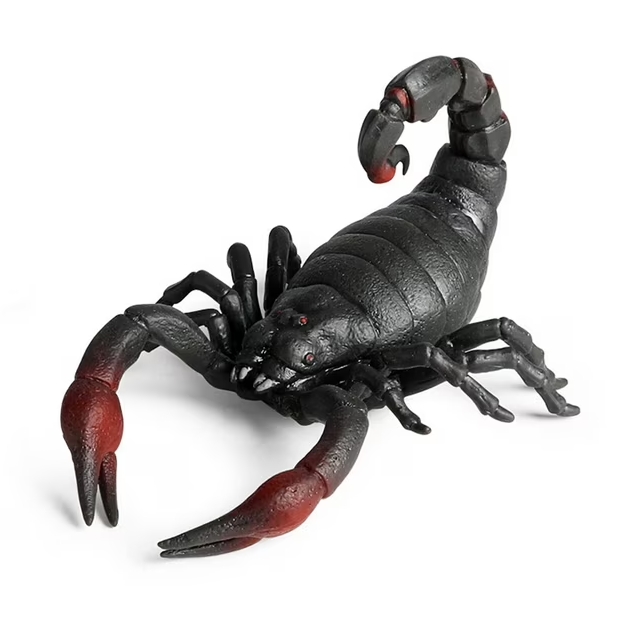Scorpions, ancient arthropods, have thrived on Earth for millions of years. Their unique appearance, the body is divided into three parts: head, chest and abdomen, with a hard exoskeleton, it is both mysterious and frightening. There are many kinds of scorpions, about 1500 species are known in the world, widely distributed in deserts, forests, grasslands and other ecological environments.
The preparation of scorpion specimens is a delicate art, usually requiring special treatment to preserve their original form and color. The process typically involves drying, shaping, and preservative, designed to prevent pests and rot. During the drying process, the common method is to expose the scorpion to sunlight or use chemicals to remove water from the body. In this process, the details of the scorpion are particularly important, especially its elegant eight legs and delicate pincers, which become an important focus of specimen viewing.
Scorpion specimens are of great value in scientific research and education. By looking at the specimens, researchers can gain insight into the taxonomy, morphological characteristics and ecological habits of scorpions. In addition, the toxicity of scorpions and their hunting methods are important topics of scientific investigation. Many students and hobbyists have also developed an interest and love for the natural world by observing these specimens, helping to raise awareness and protect biodiversity.
From an aesthetic point of view, the ornamental value of scorpion specimens cannot be ignored. Due to the unique characteristics of metamorphosis and predation, scorpions exude a mysterious and compelling charm. Many specimens have become works of art through exquisite display, attracting the attention of many viewers. Scorpions, with their ornate pincers and slender limbs, are often the subject of photographers capturing the beauty of nature.
In general,scorpion specimens are not only materials for biological and ecological research.




